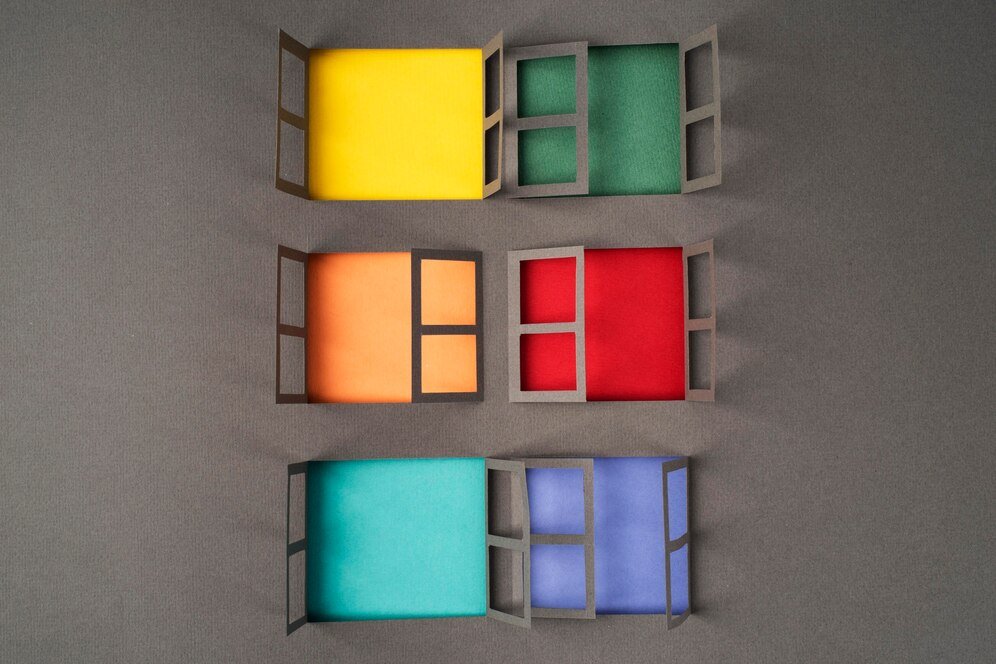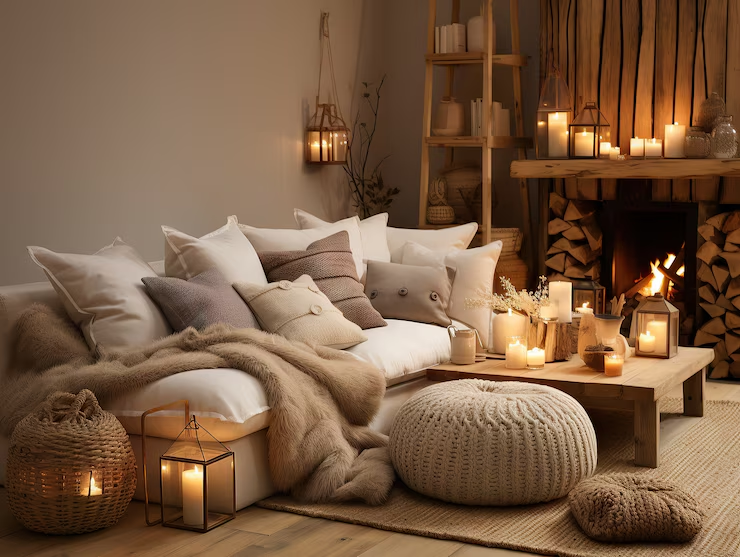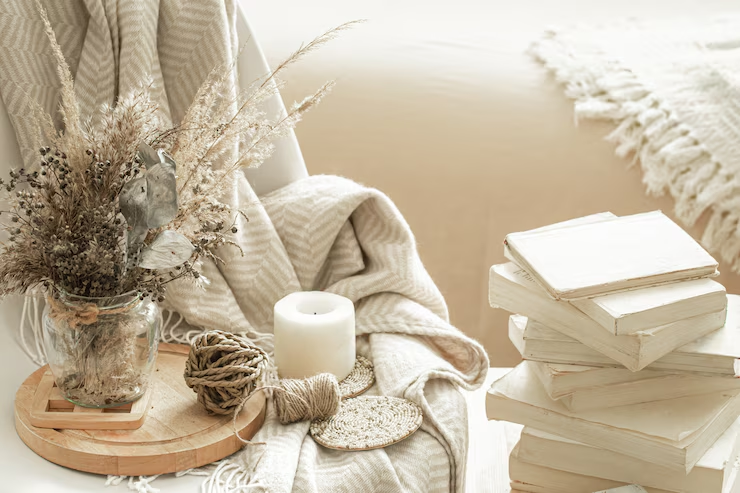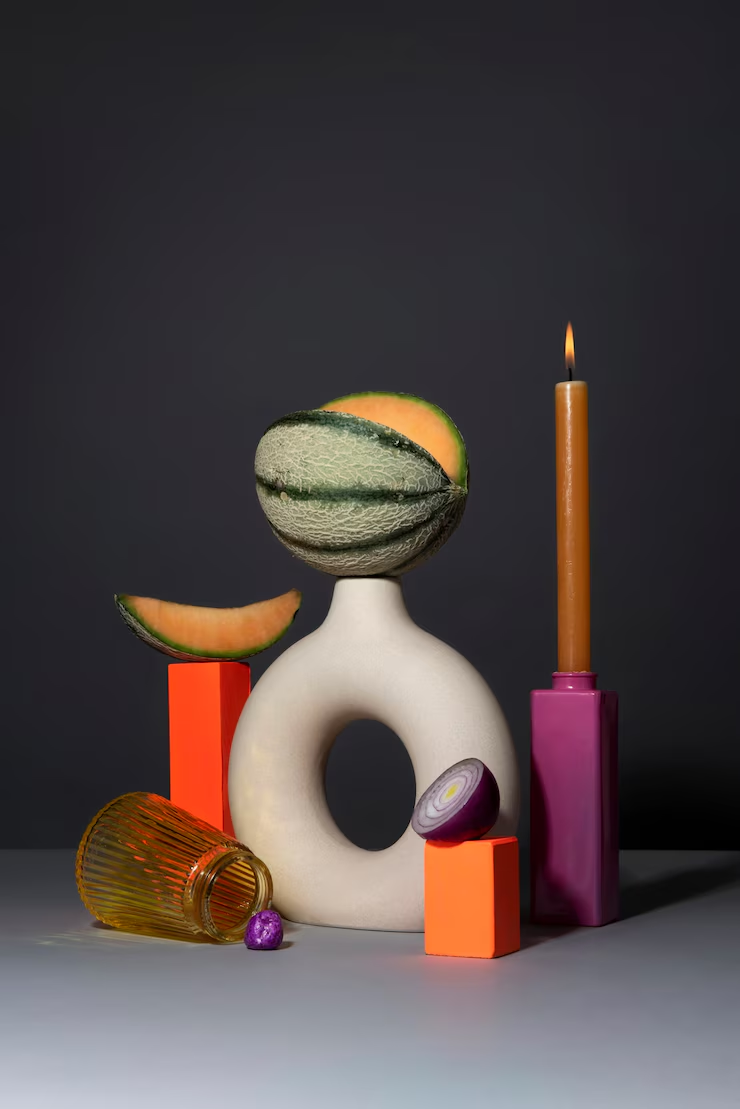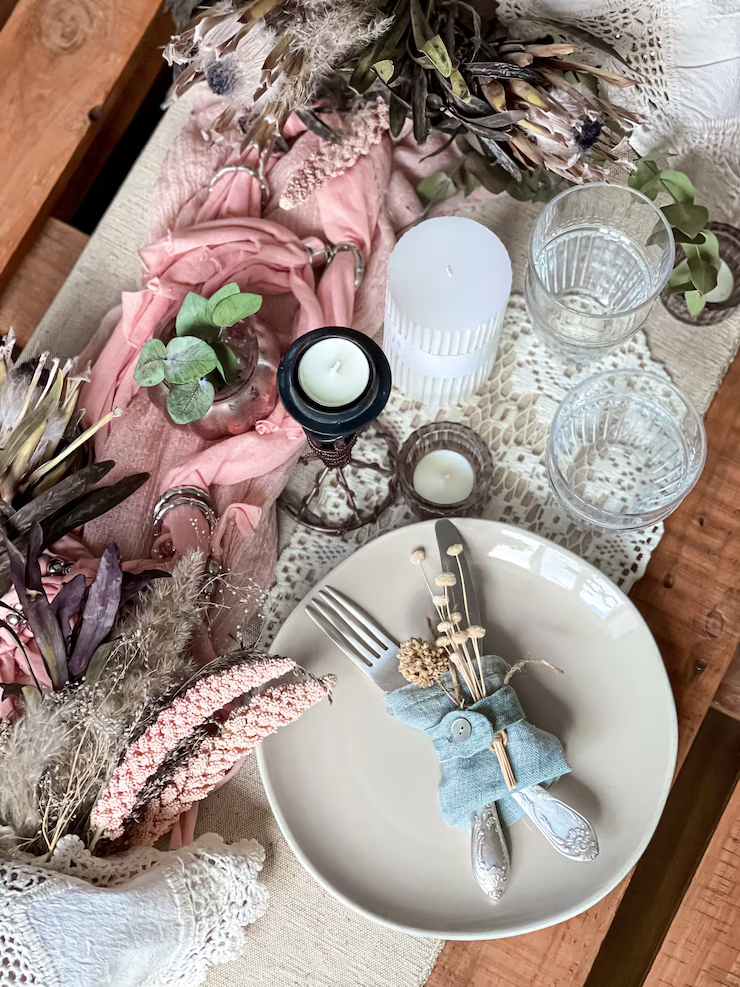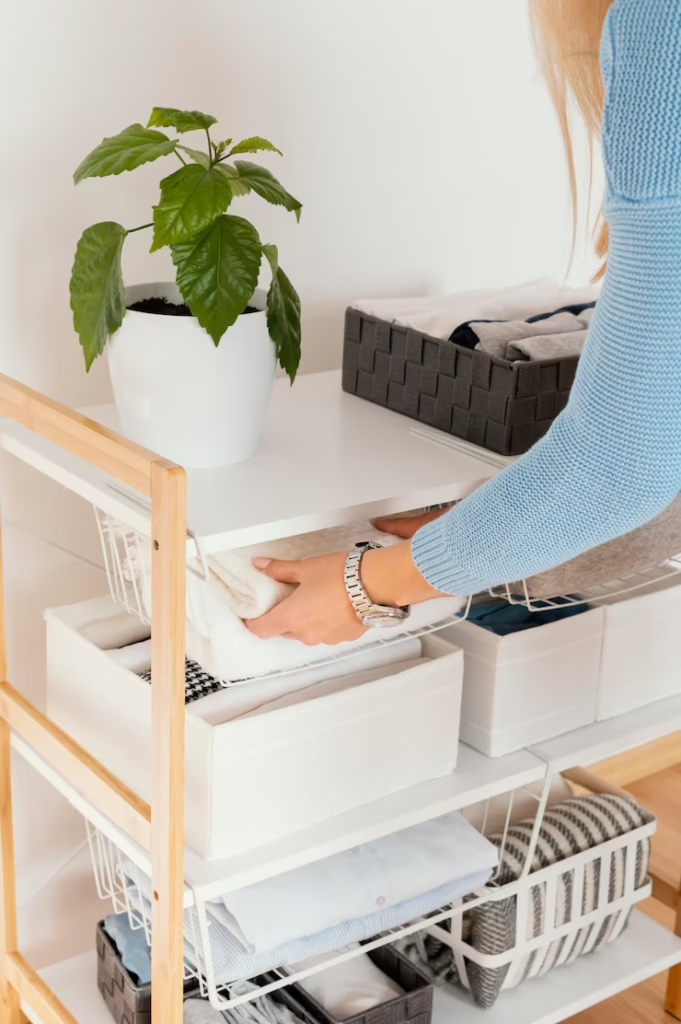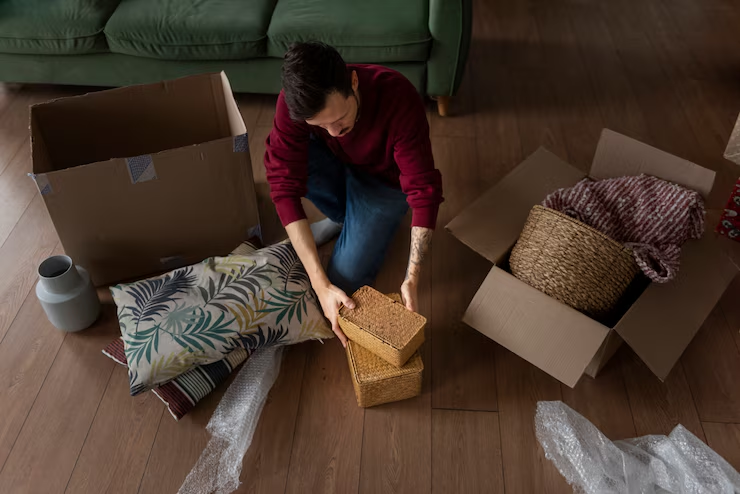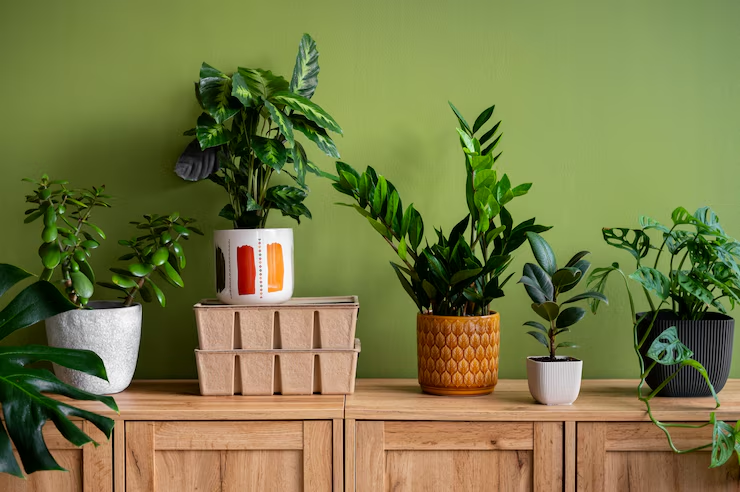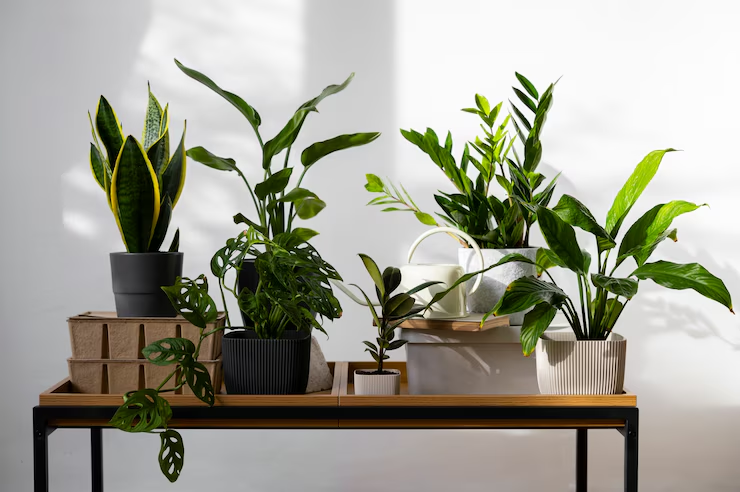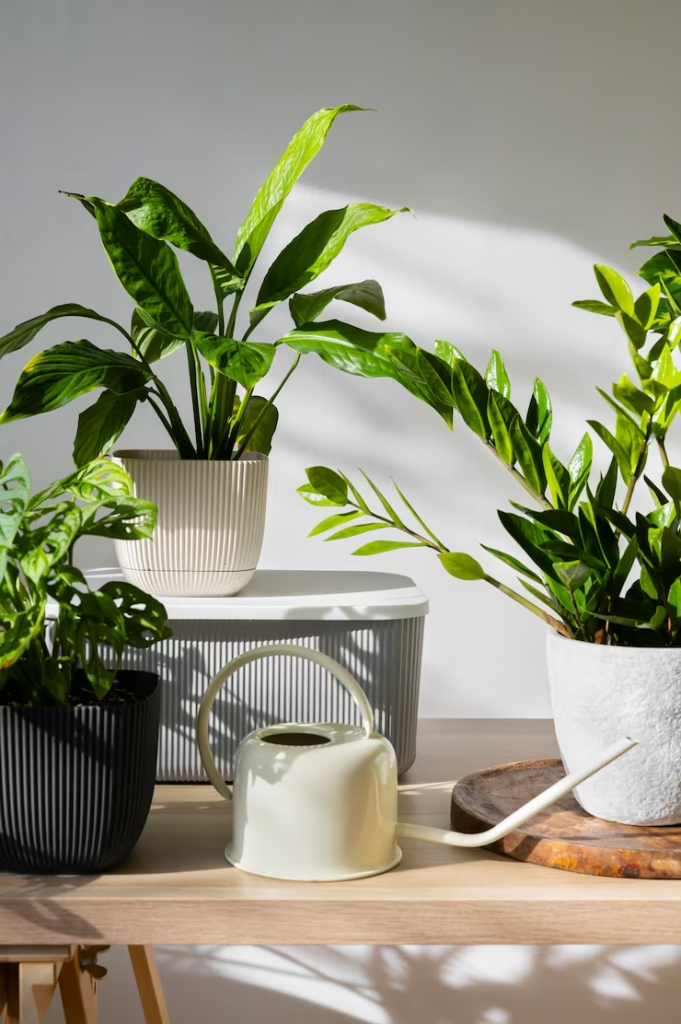Choosing a color scheme that enhances a room’s mood can change how you feel in a space. You can make a room feel calm, warm, or bright with the right hues. This guide shows you how to pick colors that fit your style and mood.
Why Your Color Scheme Matters
Colors shape how you feel. Blue can calm you. Red can boost your energy. Yellow can lift your spirits. So, you want a color scheme that enhances a room’s mood. First, think about what you want to feel in that room. Then, pick colors that match that feeling.
Define the Mood You Want
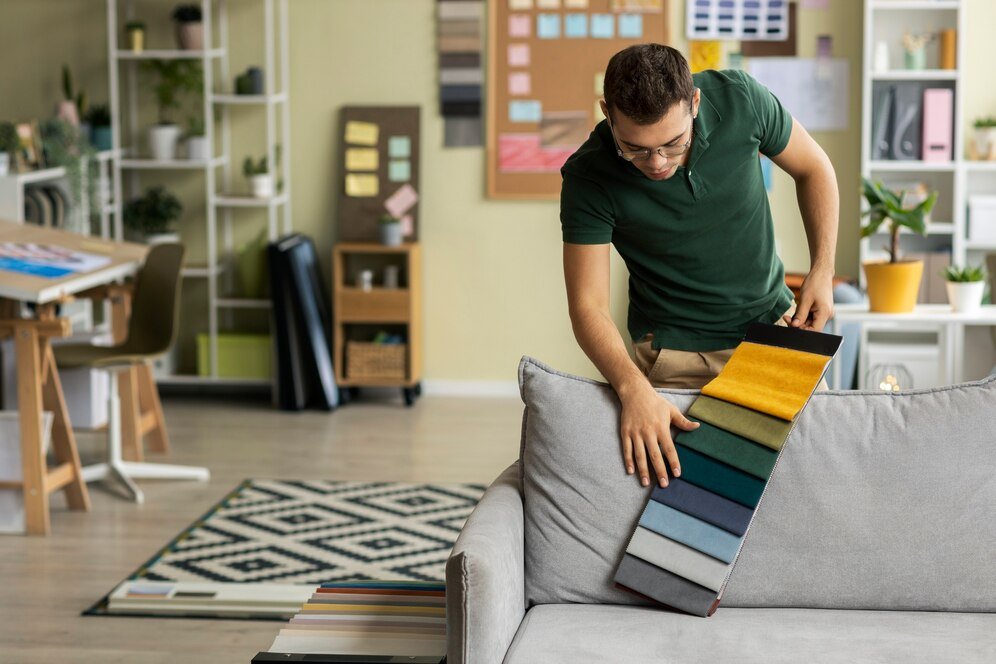
Source: freepik
Start by naming the mood. Do you want a calm space for rest? Or a bright spot to work in? Write down one or two words. For calm, choose soft blues or greens. For energy, pick reds or oranges. For focus, try muted yellows or neutral grays. When you know the mood, you can choose colors that fit.
Learn Color Basics
Primary, Secondary, and Accent Colors
Primary colors set the main tone. These cover most of your walls.
Secondary colors fill in smaller areas. Think of a chair or a rug.
Accent colors pop. Use these in small bits like pillows or art.
Color Wheel Guide
A color wheel shows how colors relate. Opposite colors on the wheel work well together. For example, blue and orange. But you can also pick colors next to each other. For example, blue and green. These combos feel calm.
Pick Your Main Color
Choose one main hue for most of the room. Think of your mood word. If you want calm, pick a soft blue. If you want energy, pick a warm red. Paint all walls in that hue or a lighter version of it. This keeps the look simple.
Add Secondary Colors
Next, pick one or two secondary colors. These can go on a feature wall or in furniture. For a calm room, use light gray or beige. For a warm room, use soft orange or tan. Keep these colors less bold than your main color. They should support it, not fight with it.
Use Accent Colors
Accent colors give your room life. Pick one bright shade. Use it in small bits. Think pillows, vases, or lamps. If your main color is blue, try a bright yellow pillow. If your main color is red, add a teal vase. These small pops draw the eye.
Test Paint Samples

Source: freepik
Before you buy paint, test small patches on your wall. Watch how the light hits them at different times of day. A color can look cool in morning light but warm at night. This step can save you from a choice you might regret.
Consider Light and Space
Natural light changes a color. A small room with little light needs lighter colors. They make it feel bigger. A big room with lots of light can handle darker tones. They add depth and coziness.
Balance Warm and Cool Tones
Warm colors like red, orange, and yellow feel active. Cool colors like blue, green, and purple feel calm. To keep a room from feeling too hot or too cold, mix both types. For example, pair a warm beige wall with cool blue accents.
Think About Finish
Paint comes in matte, eggshell, satin, and gloss. Matte hides wall flaws. Gloss reflects light. Satin and eggshell sit in between. Pick a finish that fits your mood. Use matte for calm spaces. Use satin for areas you clean often, like kitchens.
Use Neutrals to Ground Your Scheme
Neutrals like white, gray, and tan help your bright hues stand out. They give your eyes a rest. Use neutrals on big items like sofas or curtains. Then add your bold hues in smaller items.
Create a Color Plan
List your main color, two secondary colors, and one accent color.
Sketch the room.
Mark where each color goes.
Check balance. Make sure no color overpowers the rest.
Apply the 60-30-10 Rule
This simple rule keeps your scheme balanced:
- 60% main color: walls, large rugs.
- 30% secondary colors: furniture, curtains.
- 10% accent color: pillows, art, small decor.
Follow this rule and your room will feel right.
Look for Inspiration
Browse magazines, websites, or social media. Save images you like. Notice the color mixes. See how people use light and shade. Use these ideas but tweak them to your taste.
Mix Textures and Patterns
Color is not the only way to set mood. Textures and patterns add depth. A soft rug can feel cozy. A rough wood table can feel warm and real. Mix smooth and rough. Use stripes, dots, or floral prints. Keep patterns to one or two types so it does not look busy.
Keep It Flexible
Your taste can change. Use items that you can swap easily. Pillows, throws, and art are easy to change. This way, you can tweak your color scheme that enhances a room’s mood without a big redo.
Avoid Common Mistakes
- Don’t use too many bright colors at once.
- Don’t ignore lighting.
- Don’t skip testing paint.
- Don’t pick colors only online. Real light can shift a shade.
Final Words
Once you paint and add decor, step back. Live with the room for a week. Notice how you feel in it. If you feel good, you got it right. If not, change one element at a time. Swap a pillow or paint a small wall.
